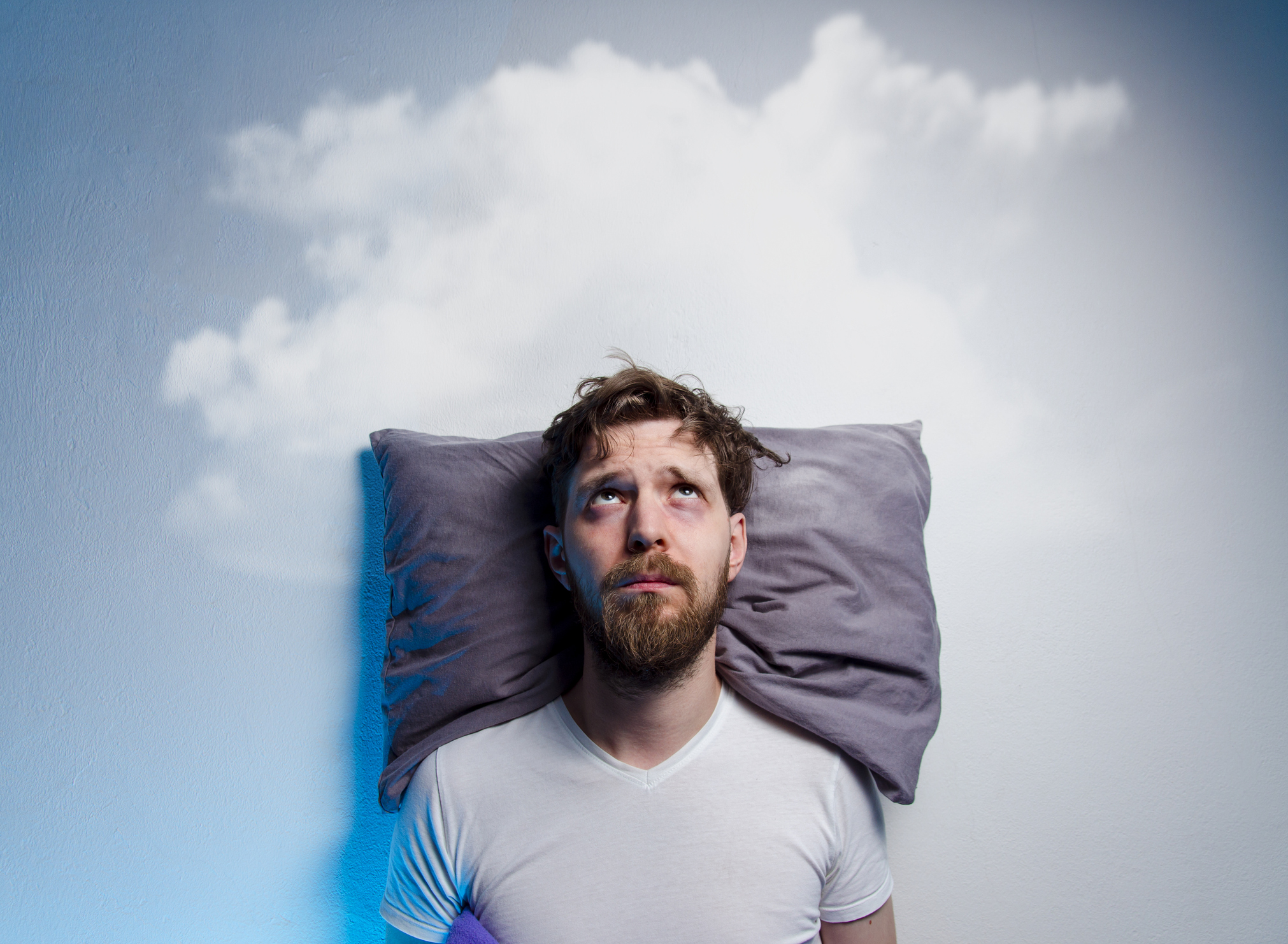
Can brain white matter help us understand sleeplessness and depression?
17 June 2024

17 June 2024

27 June 2024 – Tom Bresser’s doctoral research on brain white matter offers new insights into both insomnia and its ensuing risk of depression.
Sleeplessness, also known as insomnia, is in itself a prevalent and complicated health problem. On top of that, it also increases the risk for developing (severe) depression. Still, the underlying brain mechanisms remain poorly understood.
Tom Bresser, PhD student at Eus van Someren’s group, explored both insomnia and its ensuing risk for depression through the brain’s white matter. White matter tracts serve as ‘motorways’, or communication points between different brain areas. “Essentially, I’ve tried to see how white matter in people with insomnia differs from those without sleep problems so that we can understand the biological mechanisms a little better”, Bresser explains.
Bresser mostly worked with MRI data, comparing normal sleepers to people with insomnia, and exploring how these patterns change over time after online-guided sleep therapy. The sleep therapies used in Bresser’s study include online-guided cognitive behavioural therapy for insomnia and activities supporting circadian rhythm, such as exposure to bright light or taking a warm bath before bed.
“We found a few effects here. A specific area of white matter in the brain predicted worsening of depressive symptoms in untreated participants with insomnia. On the other hand, that same white matter region predicted alleviation of depressive symptoms in treated participants. This result shows that there is a relation between the brain’s white matter and resilience to depressive symptoms in people with insomnia that can be influenced with therapy.”, Tom explains.
“But the most exiting findings can be found after the combined sleep therapy. We saw a subtle change in the white matter of the right superior corona radiata after six weeks of the combined sleep therapy. These changes happened alongside a reduction in insomnia symptoms. These results are encouraging, because it shows that things don’t have to be permanent. Of course we’re talking about subtle differences but these findings suggest there is an interaction between sleep therapy and the way your brain responds to it”.
To get a better grasp on our understanding of insomnia, Bresser returned to its definition as well. “There are still so many unknowns in insomnia and it differs a lot between people too”, Bresser explains. In the past, insomnia has been subdivided into categories based on symptoms such as sleep duration, but according to Bresser this isn’t the most effective. “The issue with this type of categorisation is that it doesn’t stay constant over time. Your insomnia complaints might change from difficulty falling asleep to waking up really early in the morning, and then you suddenly belong to a different category.”
Bresser’s colleague (dr. Tessa Blanken) developed an alternative subdivision for insomnia. Rather than basing it on symptoms, she developed five groups based on the individual’s personality traits and mood. Bresser continued to build on her work by looking at the these insomnia subtypes using a MRI scanner.
“I wanted to know whether these five categories would be reflected in the brain’s white matter and it turns out that they likely are!” Bresser shares enthusiastically. “It seems that alterations in white matter vary between different insomnia subtypes.”
“We looked at how much white matter connections differed in multiple brain circuits, like the default mode network and limbic network. Different insomnia subtypes had different profiles of which brain circuits were altered the most. For example, we saw that the limbic network, which is involved in emotional processing, shows more altered white matter connections in an insomnia type that reports less positive emotions.”
Bresser: “this research mostly helps our understanding of insomnia and where it comes from. We hope that this can help to improve insomnia treatments because we better understand the involved brain circuits. Everyone has the same label, but there are so many differences between their experiences and insomnia symptoms. If in some people the emotional brain circuit is more involved, perhaps therapy should focus on that particular aspect.”
On a more personal note, Bresser hopes his research can help those suffering from insomnia understand their own health problem better as well. “Throughout my research I spoke to a number of people who don’t feel like they’re taken seriously, or are told that they should just go to bed earlier. Hearing that they’re not crazy, and that there are observable differences can offer them relief”.
Tom Bresser: Below the surface: The role of brain white matter in insomnia and its ensuing risk of depression. Supervisors: Prof. dr. E.J.W. van Someren and Prof. dr. M.P. van den Heuvel. The defence will take place on Thursday 27 June at 13.45 in the Aula of the Vrije Universiteit (De Boelelaan 1105), Amsterdam.

The Friends Foundation facilitates groundbreaking brain research. You can help us with that.
Support our work